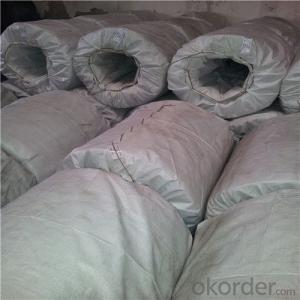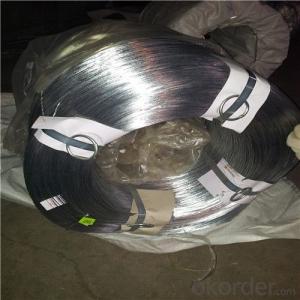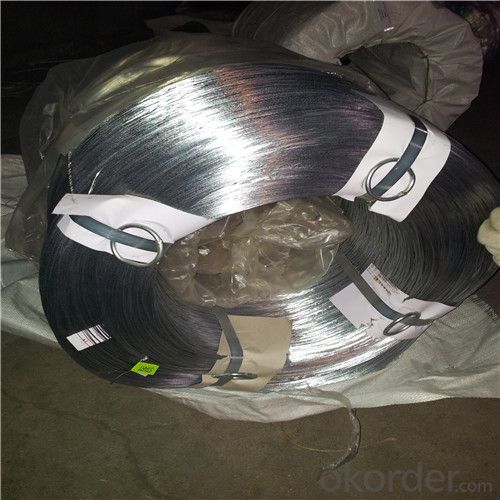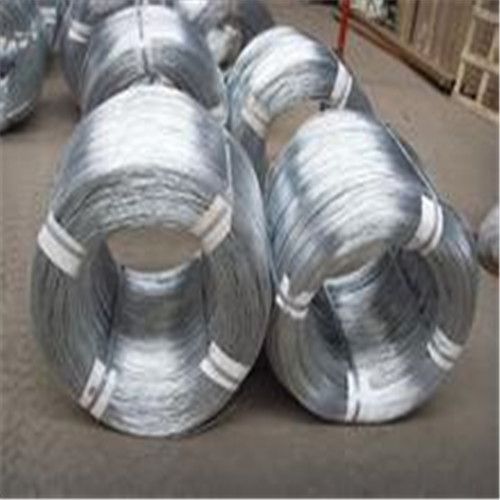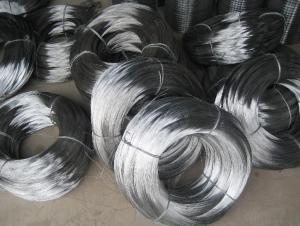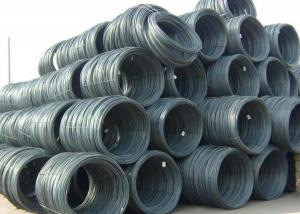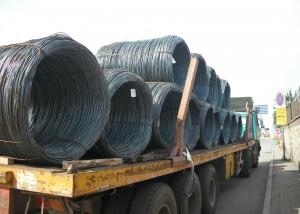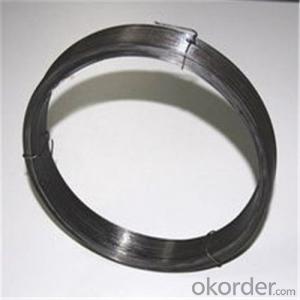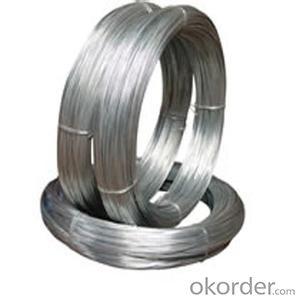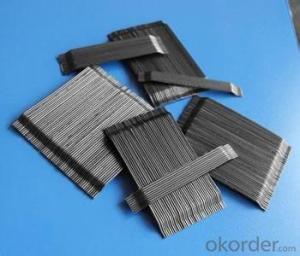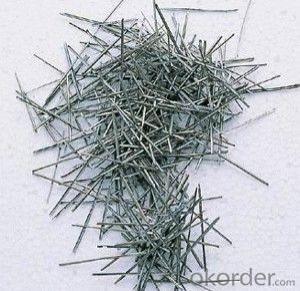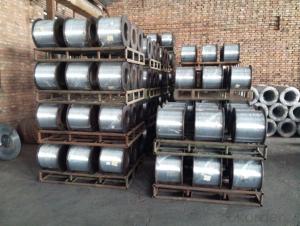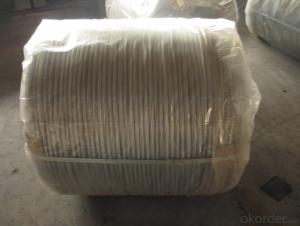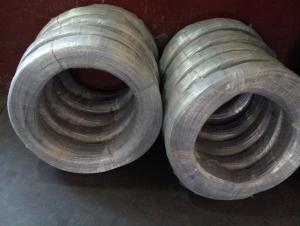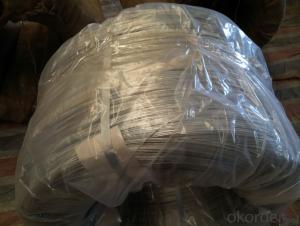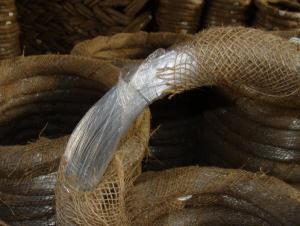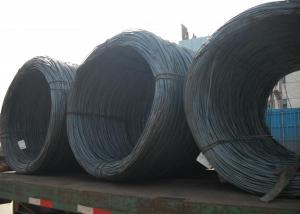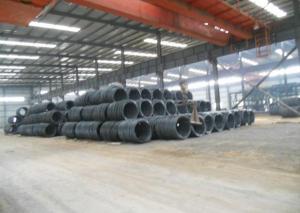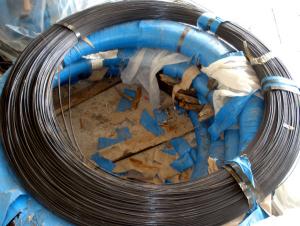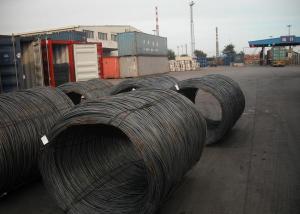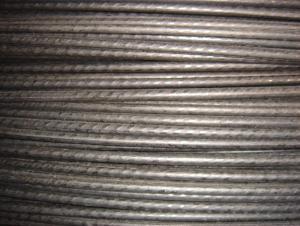Galvanized Iron Wires
- Loading Port:
- China Main Port
- Payment Terms:
- TT OR LC
- Min Order Qty:
- -
- Supply Capability:
- -
OKorder Service Pledge
OKorder Financial Service
You Might Also Like
Galvanized Wire/Galvanized Steel Wire/ Gavanized Iron Wire
Diatmeters:0.15mm-6mm
Application | Weaving, braiding, fencing, cable armoring, knitting, tie wire, for redrawn, for binding or forming etc. |
Material | low carbon steel wire |
Diameter | 0.15mm~6.00mm |
Tensile strength | 350-500MPA, or higher |
Zinc coating | Min 12g/m2, min 25g/m2, min 200g/m2,min 300g/m2,610g/m2 |
Surface treatment | Hot dipped or electro galvanized |
Packing | On spools In small coils of 25-50kg/coil, 10kg/coil In rosette coil of 100-800kg/coil |
Standard | ASTM 641, EN10257-1& EN10244-2 |
All can be produced according to customers’ requirements.
- Q: what size of wire should I use for my 1.5hp aircon, 220volt
- You should use AWG 14 Copper wire.
- Q: I purchased a wiring harness to install an aftermarket receiver in my 2000 Chevy Cavalier, also. I have lost the insert that came with the harness and as such I am at a loss as to how to wire my receiver to the harness.help
- 2000 Chevrolet Cavalier Car Stereo Radio Wiring Diagram Car Radio Constant 12v+ Wire: Orange Car Radio Switched 12v+ Wire: Ignition Switch (The radio harness does not provide a switched power source. Run a wire from the Ignition Switch.) Car Radio Ground Wire: Black Car Radio Illumination Wire: Gray Car Stereo Dimmer Wire: N/A Car Stereo Antenna Trigger: Pink Car Stereo Amp Trigger Wire: N/A Car Stereo Amplifier Location: N/A Front Speakers Size: N/A Front Speakers Location: N/A Left Front Speaker Positive Wire (+): Tan Left Front Speaker Negative Wire (-): Gray Right Front Speaker Positive Wire (+): Light Green Right Front Speaker Negative Wire (-): Dark Green Rear Speakers Size: N/A Rear Speakers Location: N/A Left Rear Speaker Positive Wire (+): Brown Left Rear Speaker Negative Wire (-): Yellow Right Rear Speaker Positive Wire (+): Dark Blue Right Rear Speaker Negative Wire (-): Light Blue
- Q: where can i buy these type of wires (copper insulated wires)??
- Any hardware store or Lowes, Home depot There's nothing special about Insulated wire, but what size wire ? What's your application ?
- Q: When you electromagnetize a nail with wire coiled around it, then connect it to a small battery, how come it works when the wire has been been insulated,..... and what if you were to use uninsulated wire.
- The insulation around the wire prevents the flow of current between wires, (shorting out the coil). It has no effect on the magnetic field created by the flow of current in the wires. If you tried uninsulated wire, you wouldn't have much of a field, as the current path would be short, direct from one end of the coil to the other with no 'turns` at all.
- Q: I have two low voltage wires that run from one side of a building to another. The insulation on both wires is the same color. I eventually just walked an additional wire around the building and checked continuity. Is there an easier way to differentiate between the two wires?
- Assuming that the two wires are unconnected at both ends. If it was a long way to walk, I'd probably just have connected one wire to earth (or an earth bonded item like a radiator) at the far end and checked for continuity to earth at the local end. A slightly more esoteric way would be to connect a diode between the wires at the remote end. A d.c. continuity check between the two wires at the local end would allow you to deduce which wire was connected to the anode and which to the cathode. A battery between the wires at the far end and a d.c. voltmeter at the local end would do much the same job in that it would tell you which wire was connected to positive! .
- Q: My computer kept switching all the time when ever I was playing a game. So I had alook in my computer and a wire I bought to extend the CPU wire. The extended wire had burnt so bad that the wire was showing out of the insulting. Will this effect my computer in any way because it was working fine and I shut it down before I took the wire out does it matter that my psu only has a 4 pin for CPU and my motherboard has a 8pin?
- Rule #1, never add extension wires to any PSU to motherboard... If the wire does not fit, get a different case or different PSU... If the PSU is still working, you should be ok. Just get a proper cable to the motherboard (and/or change PSU). Melted wires are an indication of too much current in the wire for a given wire size. In plain words, the wires were too small for the load they carried. Since your mobo has an 8 pin CPU power socket, you MUST get a PSU that has the same 8 pin. In general, 8 pin can carry twice the current that 4 pin can, hence that is why your wires burned, you were putting too much current through the 4 wire, current that needed the 8 wire plug... A 4 wire will not work - ever, it will still overheat.... Get the right power supply !!!
- Q: what are the differences between wired and wireless microphones? and what are the Pros and Cons of having a wired mic, pros and cons of a wireless?Thanks......
- The instant one does no longer have the mute function together as the under pressure out one does. The instant one you ought to cost whilst it dies and the cable isn't long adequate to attain your ear together as its plugged into the console.
- Q: I recently bought a stereo for my truck. What is a good average gage for a ground wire? Speaker wire? Power wire? Last but not least a speaker control (remote) wire? If it helps, I am running a 760 watt pioneer amp on two 12 inch subs. Thanks
- It depends on the size of the amplifier. Recommended wire size should be no less than 10 gauge wire for power and ground. 4 or 8 Gauge power wire you need 4 or 8 gauge ground wire . Speaker wire depends on the speaker. Door speakers should use14-16 gauage speaker wire. Subwoofers should use no less than 12 Gauge speaker wire. Remote wire doesn't need to be big at all use can use 16-18 gauge wire for the installation.
- Q: could someone teach or explain to me how to hook up the 1st one, i do not understand what is happening there. How do you connect thoes wires to the main wire??? the distribution?
- Ok, first thing you want to do is, for each subwoofer, wire a negative and positive together. You can use regular speaker wire to do that (well you're supposed to anyway). After that, you will have a negative and positive terminal left on each subwoofer. What you need to do is run a speaker wire from each of the terminals, so you have 6 different wires from 6 separate terminals. Make note of the 3 positive wires and the 3 negative wires. Now what you do is simply twist together the 3 positive wires together, so you have 1 positive wire. Connect that positive wire to the positive terminal of the amp (if it's a 1 channel amp. If it's a 2 channel, connect it to a bridged channel on the positive terminal. Or however you want.) Do the same for the 3 negative wires. Twist them together to have 1 negative wire, and connect it to the negative terminal on the amp. Finished! That kind of wiring is called Series wiring, by the way. The other kind is called Parallel wiring.
- Q: wic iring codes for turner plus three wired to uniden washington cb radio
- I love wiring questions :) do you want to use the PTT? If yes you can assume it is a switch and solder it inline with the lead the other end (after the switch would be connected to the lead end of the 1/4 if you have a pigtail 1/4 then this would be the insulated wire, the ground would simply connect to the uninsulated wire if you are actually using a do it yourself 1/4 plug then the same rules apply only you are soldering to the terminal inside the plug sleeve rather then to bare wires (I always prefer this its cleaner). Please Note: The PTT switch will cause a loud pop when it is engaged and released on a Hi Gain guitar amp and sometimes this can damage the speakers as well as delicate internal components so do this of coarse at your own risk.
Send your message to us
Galvanized Iron Wires
- Loading Port:
- China Main Port
- Payment Terms:
- TT OR LC
- Min Order Qty:
- -
- Supply Capability:
- -
OKorder Service Pledge
OKorder Financial Service
Similar products
Hot products
Hot Searches
Related keywords
